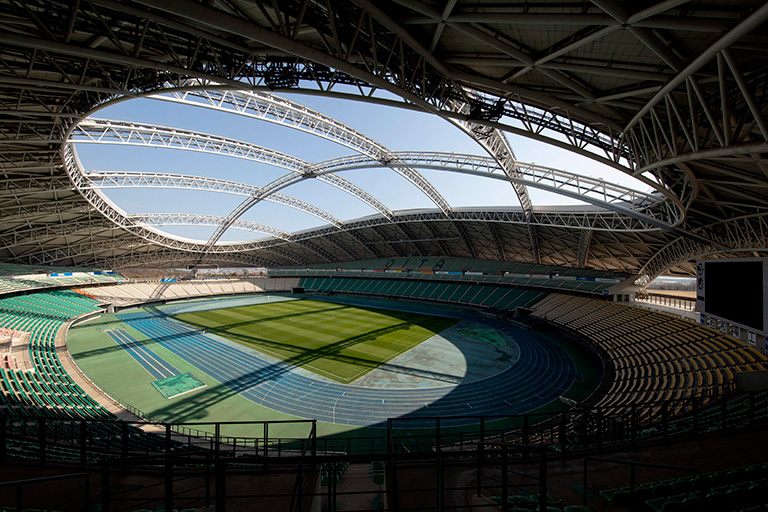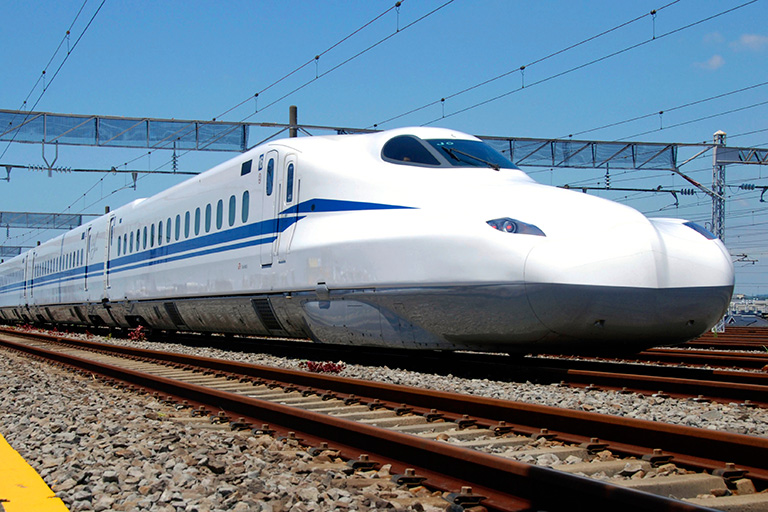The story of Japanese rugby city Kamaishi provides a humbling backdrop to a World Cup powered by steel
Kamaishi, found in the Iwate Prefecture on Japan’s east coast and home to around 35,000 people, is known throughout Japan for two reasons – steel and rugby.
Steel production has thrived here since the 19th century when the first modern blast furnace was built at the Hashino smelting facility, which is now a UNESCO World Heritage site.
It is thanks to this history with steel that the town’s association with rugby began, as the local Nippon Steel sponsored team, the Kamaishi Seawaves, grabbed headlines in Japan in the 1970s and 80s by winning an incredible seven consecutive national championships.
The city’s story – particularly in the past decade – has gained even greater relevance, with the biggest competition in world rugby set to roll into Japan.
 The Oita stadium features Japan’s largest retractable roof and is made of 12,500 tonnes of steel
The Oita stadium features Japan’s largest retractable roof and is made of 12,500 tonnes of steel
Steel on the biggest stage
As 20 nations prepare to compete for the World Cup, steel will be crucial in the structure of the venues, as well as helping rugby fans move between them.
Fans will utilise Japan’s 16,976km of steel railway to travel between the stadiums, taking advantage of one of the world’s fastest trains, the Shinkansen, which can reach speeds of up to 360kph largely on high-strength steel rails.
Several of the magnificent World Cup venues are reliant on steel, such as Oita Stadium, which has Japan’s biggest retractable roof containing 12,500 tonnes of steel, or the Sapporo Dome with its 53,000m2 roof made entirely from stainless steel and retractable pitch.
The largest stadium in use is the International Stadium in Yokohama, with a capacity of 72,327. Its enormous steel roof has been specially designed to reduce the effect of wind on the playing area and to prevent noise pollution. Even the official tournament goalposts are reinforced with stainless steel bolts and sockets.
Japan was an ideal choice to host the World Cup as 11 of the 12 tournament stadiums were already in existence. The tournament’s only purpose-built venue is in Kamaishi, the story of which has captured hearts across the world.
 The Shinkansen bullet trains will move passengers across Japan’s 16,976km of high-strength steel rails at speeds of 360kph
The Shinkansen bullet trains will move passengers across Japan’s 16,976km of high-strength steel rails at speeds of 360kph
Triumphing over adversity
Unfortunately for Kamaishi residents, the city is no stranger to adversity. It was devastated by tsunamis in both 1896 and 1933, and, in 2011, another tsunami caused thousands of deaths and city-wide destruction.
Building a rugby stadium was the perfect project to symbolise a courageous local fightback and city planners were challenged to have the stadium ready to host two games during the 2019 Rugby World Cup.
The Kamaishi Recovery Memorial Stadium, with capacity for 6,000 spectators, was planned on the former site of two schools that were destroyed by the tsunami.
Construction began in April 2017, remarkably finishing just over a year later. The steel-supported design beautifully integrates the breathtaking surroundings, with the Unosumai River on one side and mountains dominating the other.
“Back in 2011, no one could have imagined a stadium would be here bringing supporters from around the world.”
Jonny Wilkinson, Chairman, World Rugby
Builders returned in 2019 to install temporary seats in time for the two World Cup fixtures later this year, meaning 16,000 people will be able to attend each game.
The main stand, which houses the facilities and a viewing terrace, is a combination of steel framing and a large canopy that symbolises setting sail into the future – a new start towards recovery.
釜石体育场的华盖式屋顶设计用于表现扬帆驶向未来
2018年,在新开放的釜石体育场,球迷们为传奇橄榄球比赛欢呼
A monument to resilience
The World Cup 2019 deadline didn’t always seem realistic, but the city-wide project has defied the odds. England’s Rugby World Cup winner Jonny Wilkinson described the efforts as “almost beyond human in terms of power”.
He told Kyodo News: “Back in 2011, no one could have imagined a stadium would be here bringing supporters from around the world.”
With almost 1,000 people in Kamaishi still working in the steel industry today, their support was a key asset in the wake of the disaster.
“The stadium stands as a testament to the indomitable spirit of the people of Kamaishi and will act as a beacon of hope and inspiration for generations to come.”
Bill Beaumont, Rugby World Cup Winner with England
Nippon Steel’s facilities were opened to help store relief supplies, such as food and fuel. This was sent via trucks from the firm’s headquarters in Tokyo, and a large bathing facility was opened at the wire rod mill for disaster victims.
Many steel workers volunteered at refuge centres and joined makeshift fire brigades. Some spent several hours travelling by foot and bicycle to collect and move equipment. Meanwhile, others helped to move rubble to aid the search for missing persons.
Despite everything that the city has faced, a full crowd cheered on the opening game at the stadium in August 2018, and everything is on track for the iconic moment of hosting a Rugby World Cup game.
World Rugby chairman Bill Beaumont said: “The stadium stands as a testament to the indomitable spirit of the people of Kamaishi and will act as a beacon of hope and inspiration for generations to come.”
However, with recovery from the tsunami still in its infancy, the real victory is the hope it gives to residents for their future, in a city that’s as tough as the steel it is famous for.
Images: Getty